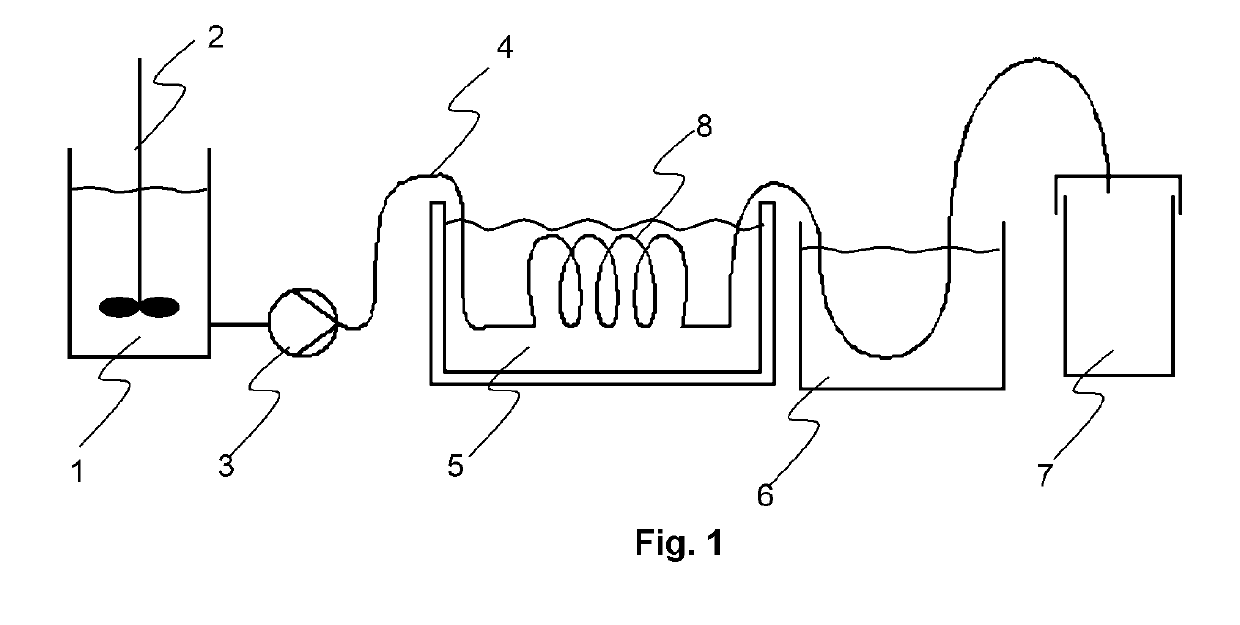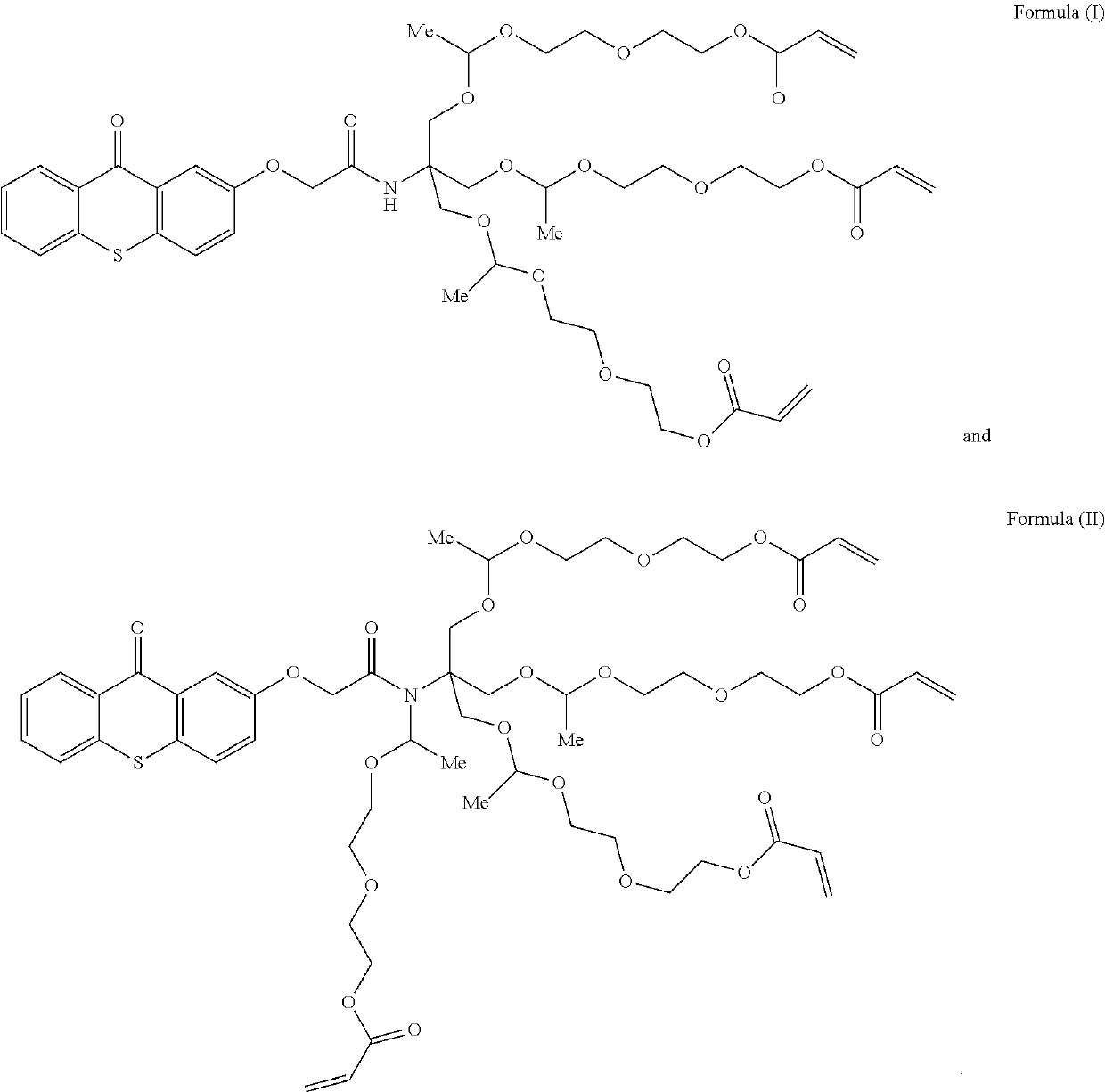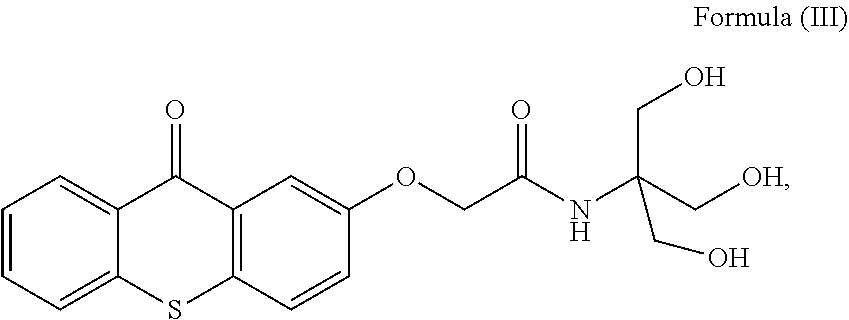Polymerizable photoinitiators
a technology of photoinitiators and polymerizables, applied in the field of polymerizable photoinitiators, can solve problems such as affecting thermal stability and shelf life, and achieve the effects of improving thermal stability, less migration and extraction, and improving thermal stability
- Summary
- Abstract
- Description
- Claims
- Application Information
AI Technical Summary
Benefits of technology
Problems solved by technology
Method used
Image
Examples
example 1
[0215]This example illustrates the synthesis by flow chemistry of the mixture of photoinitiators containing the polymerizable photoinitiators according to Formula (I) and (II).
Experiments and Results
[0216]A periodic flow chemistry apparatus was set up as shown by FIG. 1. The pulsating in-line pump (3) was combination of a peristaltic pump Shenchen™ N6-6L with DZ25-6L pump head and a pulsator modified Prominent™ beta / 4 type (modification=removal of check valves) using a peristaltic hose Marprene type: 902.0048.024 #15 from Watson-Marlow. A flow rate of about 5 L / hour was used. The channel (4) was a polytetrafluoro ethylene (PTFE) tubing available from Bohlender GmbH having an internal diameter of 4 mm and a wall thickness of 0.5 mm. The part of the channel submerged in the oil bath was wound up as a circular helical tube having a radius of 6 to 9 cm. The pulsation frequency was 1.7 Hz.
[0217]A reaction mixture RM-1 was made having a composition as shown in Table 4. The weight percenta...
example 2
[0222]This example illustrates the advantages of the mixture of photoinitiators when used in UV curable inkjet inks.
Batch Synthesis of the PI-Batch
[0223]17.12 g of AG0 was added to a mixture of 40.92 g VEEA and 25.35 g isopropyl acetate. 700 mg 3-pyridine sulfonic acid was added and the mixture was heated to 85° C. for 7 hours. TLC-analysis indicated complete conversion of AG0 ((TLC on Partisil KC18F, supplied by Whatman, eluent MeOH / 0.5 M NaCl 85 / 15, Rf: 0.3). The reaction mixture was allowed to cool down to room temperature and the catalyst was removed by filtration. The isopropyl acetate was removed under reduced pressure. The polymerizable photoinitiator is referenced here below to as Batch-PI.
Cyan Pigment Dispersion C-DISP
[0224]A 30 wt % solution of DB162 in VEEA was prepared. 1 wt % INHIB was added. 1.5 kg Sun Fast™ Blue 15:4 was added to a mixture of 1.95 kg VEEA, 2.5 kg of the DB162 solution and 50 g INHIB while stirring with a DISPERLUX™ dispenser. Stirring was continued fo...
PUM
| Property | Measurement | Unit |
|---|---|---|
| frequencies | aaaaa | aaaaa |
| particle size | aaaaa | aaaaa |
| particle size | aaaaa | aaaaa |
Abstract
Description
Claims
Application Information
 Login to View More
Login to View More - R&D
- Intellectual Property
- Life Sciences
- Materials
- Tech Scout
- Unparalleled Data Quality
- Higher Quality Content
- 60% Fewer Hallucinations
Browse by: Latest US Patents, China's latest patents, Technical Efficacy Thesaurus, Application Domain, Technology Topic, Popular Technical Reports.
© 2025 PatSnap. All rights reserved.Legal|Privacy policy|Modern Slavery Act Transparency Statement|Sitemap|About US| Contact US: help@patsnap.com



